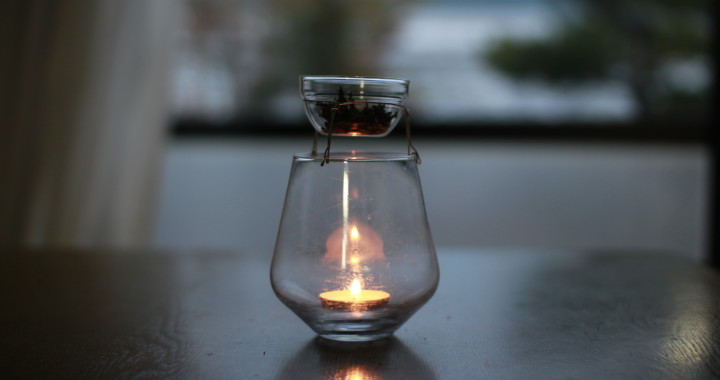In love with your cup of tea but don’t know what to do with loads of brewed tea leaves? Instead of disposing them, Japanese like to dry and re-use these tea leaves (also called chagara) in many ways, be it beauty care or household maintenance. Here’s how chagara can be used to enhance our household living conditions.
Odorless House
Catechin in tea leaves eliminates odor. Pack chagara into filter bags and put them in places that smell such as refrigerator and shoe rack. If your oven and microwave smells too, put in chagara and heat up for a few minutes. The best part, you can scatter chagara on top of disposables to reduce the unpleasant smell.
Odorless Utensils and Hands – Love the food but hate it when the smell stays on your hands or pans? Change this love-hate relationship by rubbing moist chagara on your pans, chopping board and even your hands. Rinse a few minutes later and there you go with non-oily and odorless utensils (and hands).
Dust Catcher
Isn’t it annoying that dust always fly around no matter how much you sweep the floor? Well, there is an effortless solution to this. Simply sprinkle some damp chagara before sweeping, it would catch the dust and stop them from flying again. Damp chagara can also prevent burnt ashes from flying when cleaning your fireplace.
Assistant for Indoor Air Cleaning
Feeling fatigue, headache, irritated or even breathless indoors sometimes and don’t know why? You may be experiencing Sick Building Syndrome (SBS) which is primarily due to poor ventilation and excessive inhalation of formaldehyde – a cancer prone gas released from some home products. Fortunately, researchers found that catechin, the health component in green tea, can eliminate formaldehyde. Put tea leaves in filter bags and place them around the house may help to cure your SBS (please also open your windows to ventilate the air).
As Chinese says, “Prevention is better than cure” (Yes, I am a Chinese), it is thus good to keep your house formaldehyde free:
Pressed Wood Furniture – Run hot water over chagara. Soak cloth in the solution then wipe the furniture as usual. This method also enhances their colour and makes them shiny.
Carpet – Sprinkle chagara on the carpet and vacuum it a few minutes later.
Mattresses and Curtains – Soak them in tea solution and air dry. This also kills bacteria and deodorizes them.
Natural Rust Converter
Yes, there is now an effortless solution to get rid of the rust on our kitchen utensils. As most of these utensils are iron-based, simply rub chagara against them or soak them overnight in tea. The tannin in tea would then work its magic.
Natural Fertiliser
There’s a Japanese saying, “茶殻も肥やしになる”, that is “even chagara can be used to fertilise”. Yes, Chagara, afterall, is decomposing material containing some remaining nutrients (this of course also depends on your number of steeping). Grind dry chagara into small fragments and sprinkle them on your plant/flower bed. It would help your plants to grow better.
Natural Insect Repellent
Domestic pests such as mosquito detest scent of burnt tea leaves. Ironically but in a good way, this same scent has a calming effect on people and promotes concentration. Squash the chagara into balls and place it on a candle burner.
Even after brewing, the components in tea leaves can provide more convenience in our lives (the effect will depend on how the tea leaves are brewed). Try making your own chagara today and get yourself a fresh ‘new’ house.
Written by: Freya Lim
Reference
CDC Environmental Health. What You Should Know about Formaldehyde. [ONLINE] Available at: http://www.cdc.gov/nceh/drywall/docs/whatyoushouldknowaboutformaldehyde.pdf. [Accessed 22 January 2016].
Lawrence Journal-World. 2000. Cure “sick’ buildings with a cup of tea. Google News. [ONLINE] Available at: https://news.google.com/newspapers?nid=2199&dat=20001001&id=b0IyAAAAIBAJ&sjid=GeYFAAAAIBAJ&pg=3472,451488&hl=en. [Accessed 25 January 2016].
Sharmin et al. Renewable Resources in Corrosion Resistance. Research Gate. [ONLINE] Available at: https://www.researchgate.net/profile/Fahmina_Zafar/publication/224829178_Renewable_resources_in_corrosion_resistance/links/0912f5059695dbaf42000000.pdf. [Accessed 26 January 2016].
Takagaki. 2014. Reactivity of Green Tea Catechins with Formaldehyde. Research Gate. [Online] Available at:https://www.researchgate.net/publication/226857814_Reactivity_of_green_tea_catechins_with_formaldehyde. [Accessed 25 January 2016]
The Environmental Illness Resource. 2015. Sick Building Syndrome. [ONLINE] Available at: http://www.ei-resource.org/illness-information/related-conditions/sick-building-syndrome/. [Accessed 22 January 2016].
Zhou et al. 2014. A Study of Removal of Formaldehyde Release from Furniture with Ordinary Tea. Journal of Chongqing Three Gorges University. [ONLINE] Available at: http://cnki.scstl.org/KCMS/detail/detail.aspx?filename=SCSX201403027&dbcode=CJFQ&dbname=CJFD2014. [Accessed 25 January 2016].

